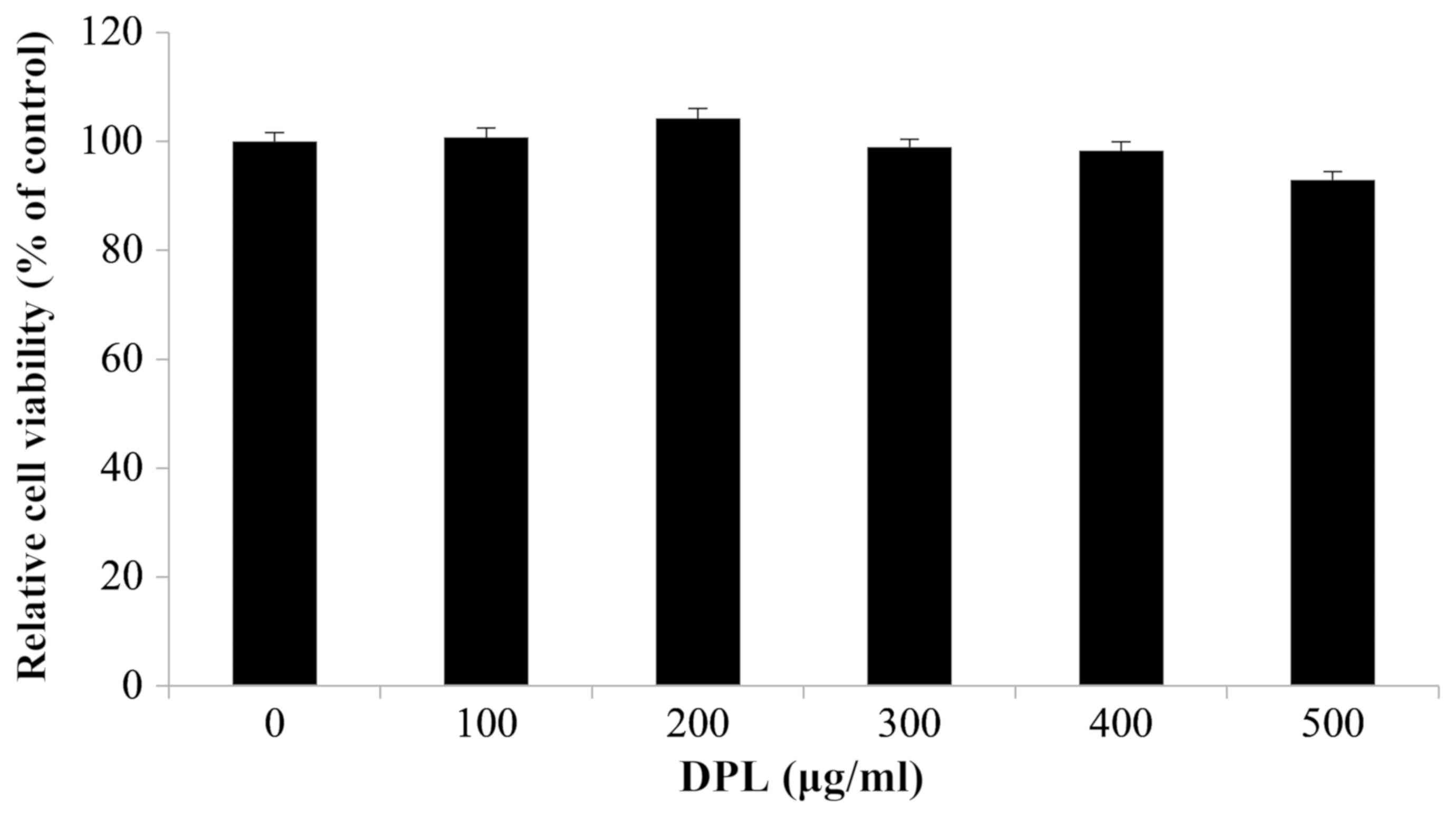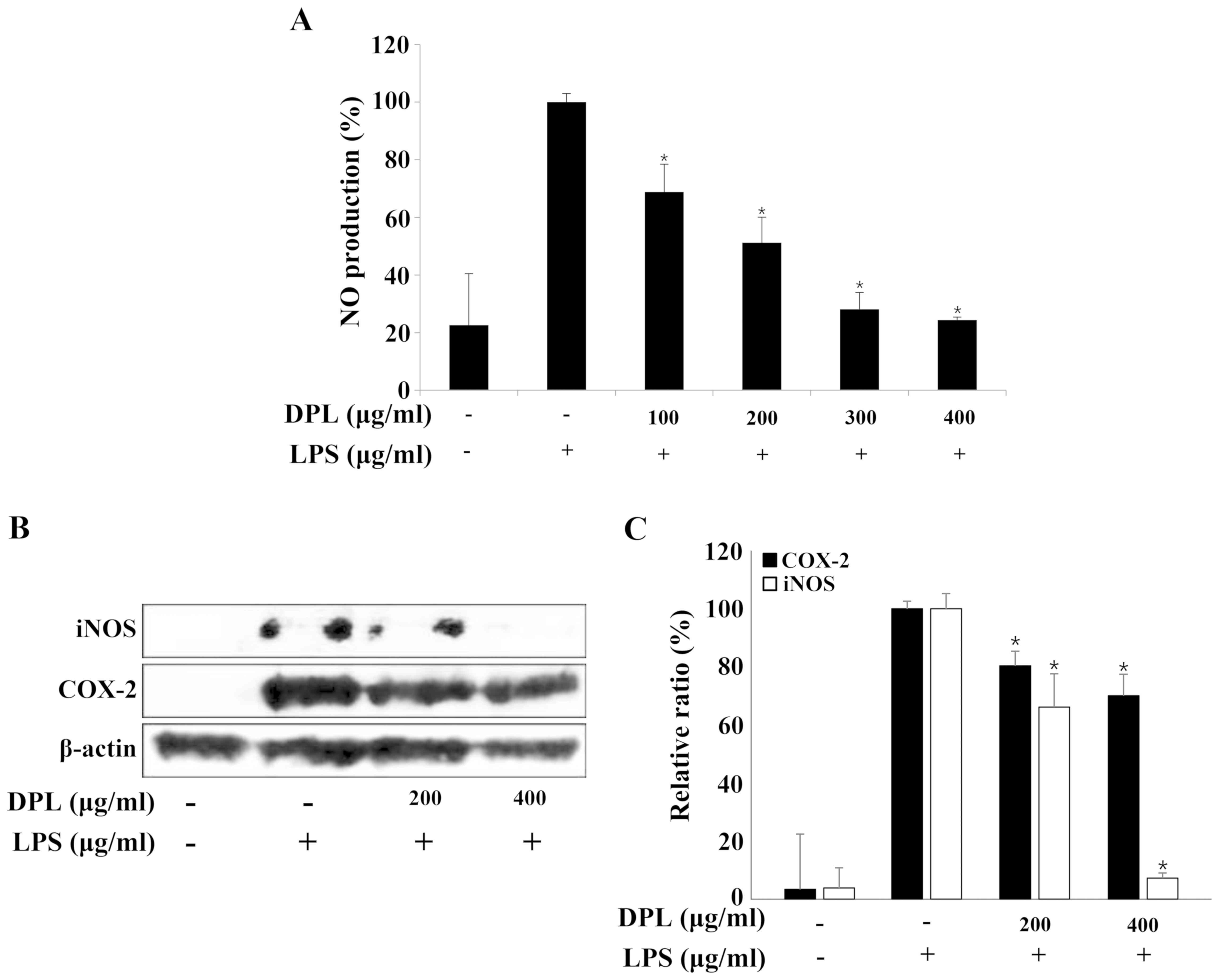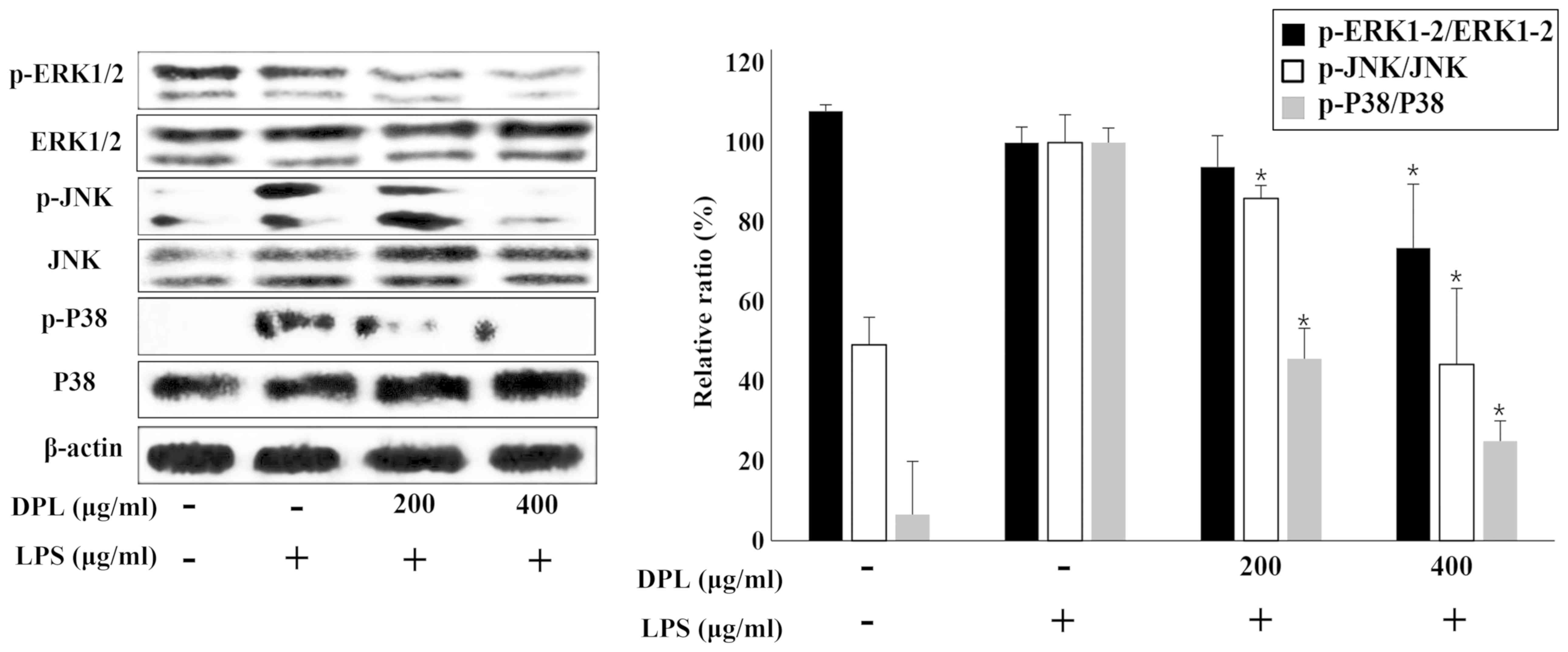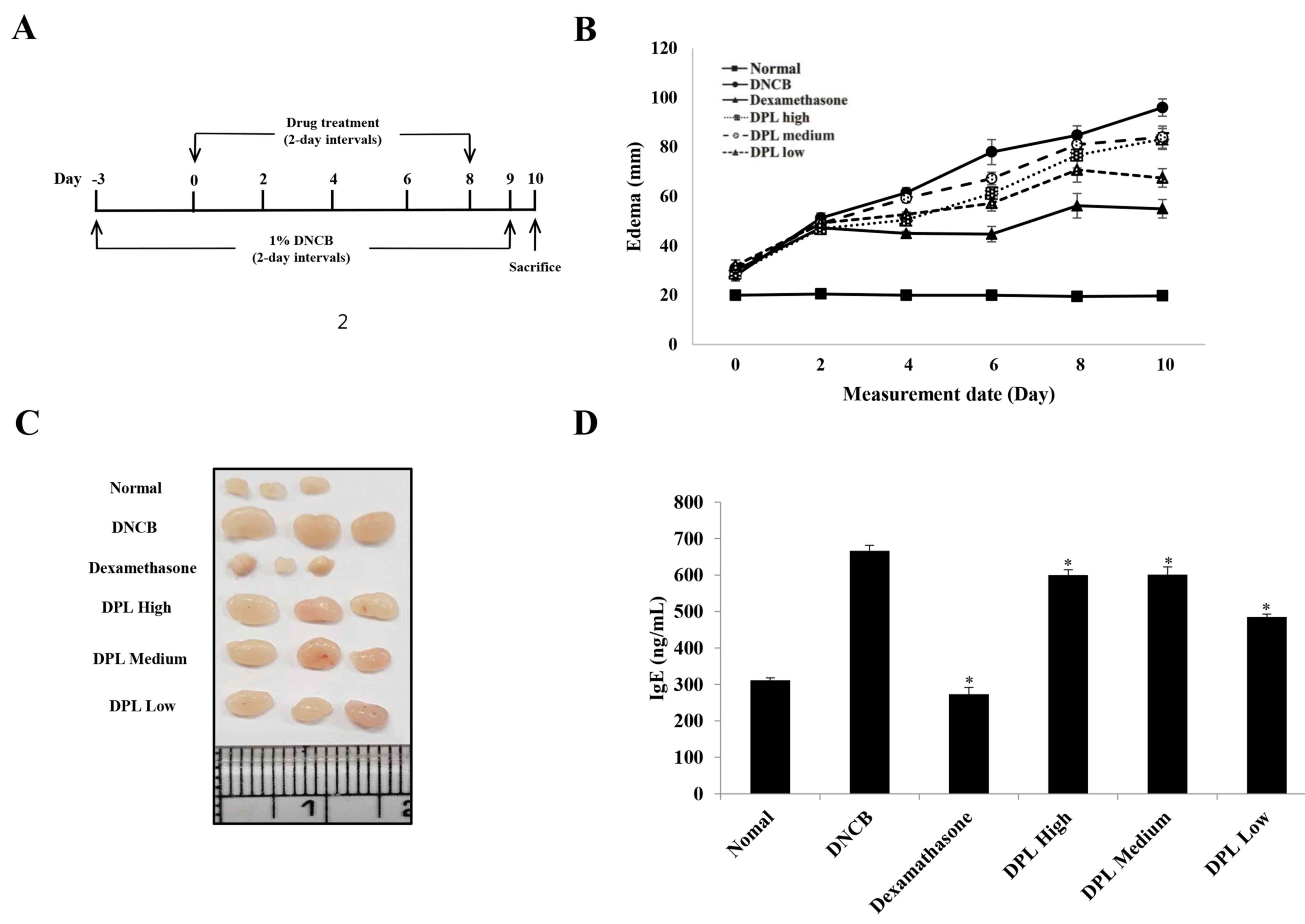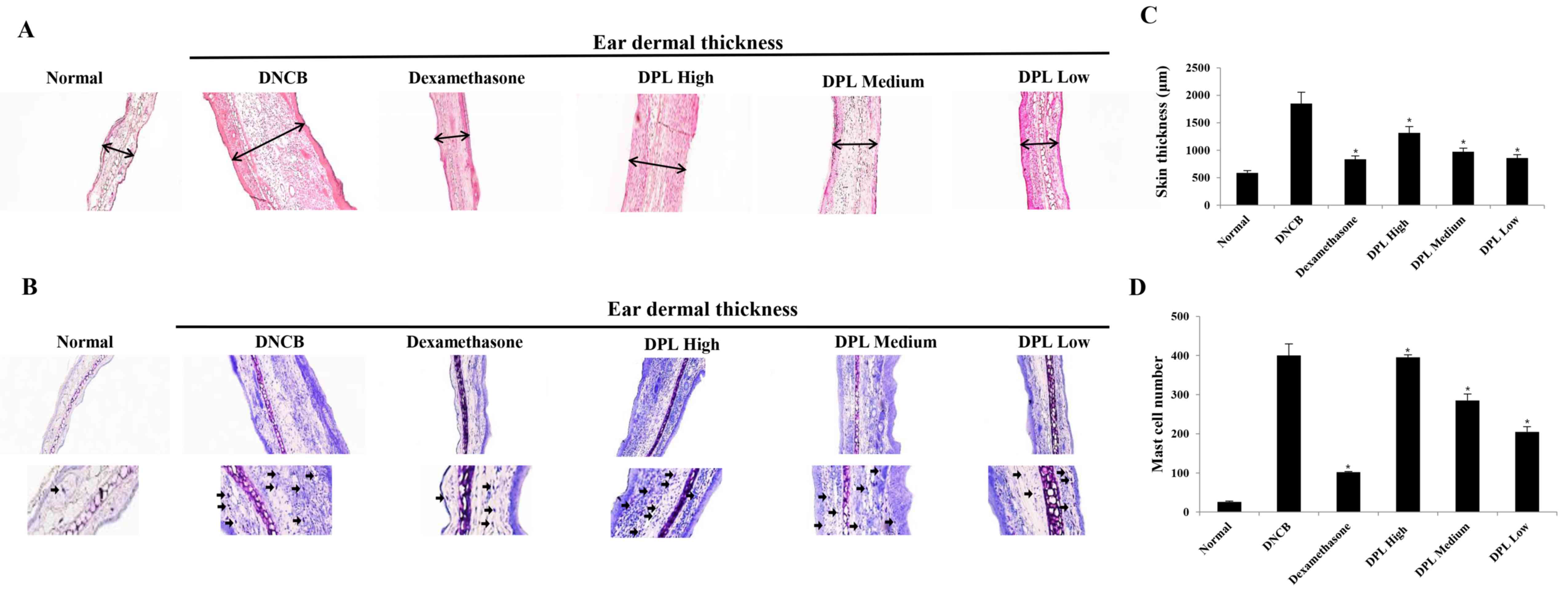|
1
|
Urabe K, Aroca P, Tsukamoto K, Mascagna D,
Paulumbo A, Prota G and Hearing VJ: The inherent cytotoxicity of
melanin precursors: A revision. Biochim Biophys Acta 1221. 272–278.
1994.
|
|
2
|
Voss GT, Oliveira RL, de Souza JF, Duarte
LFB, Fajardo AR, Alves D, Luchese C and Wilhelm EA: Therapeutic and
technological potential of 7-chloro-4-phenylselanyl quinoline for
the treatment of atopic dermatitis-like skin lesions in mice. Mater
Sci Eng C Mater Biol Appl. 84:90–98. 2018. View Article : Google Scholar : PubMed/NCBI
|
|
3
|
Hwang SW, Kang JH, Seol JE, Seo JK, Lee
DBR and Sung HS: The correlation between SCORAD index and
instrumental assessment in evaluation of atopic dermatitis
severity. Korean J Dermatol. 48:266–271. 2010.(In Korean).
|
|
4
|
Leung DY: Pathogenesis of atopic
dermatitis. J Allergy Clin Immun. 104:S99–S108. 1999. View Article : Google Scholar : PubMed/NCBI
|
|
5
|
Leung V, Hartwell R, Yang H, Ghahary A and
Ko F: Bioactive nanofibres for wound healing applications. Journal
of Fiber Bioengineering and Informatics. 4:1–14. 2011. View Article : Google Scholar
|
|
6
|
Guglielmetti S, Dart JK and Calder V:
Atopic keratoconjunctivitis and atopic dermatitis. Curr Opin
Allergy Clin Immunol. 10:478–485. 2010. View Article : Google Scholar : PubMed/NCBI
|
|
7
|
Kim BJ, Son WR, Choi MO, Jo SK, Jung HK,
Lee JT, Kim HY and Kwoen DJ: Anti-atopic effects of Castanea
crenata inner shell extracts fermented by Lactobacillus
bifermentans. J Korean Soc Food Sci Nutr. 42:1378–1386. 2013.
View Article : Google Scholar
|
|
8
|
Kang BK, Kim KBWR, Kim MJ, Bark SW, Pak
WM, Kim BR, Ahn NK, Choi YU, Bae NY, Park JH, et al: Anti-atopic
activity of tuna heart ethanol extract. J Korean Soc Food Sci Nutr.
44:1–6. 2015. View Article : Google Scholar
|
|
9
|
Ferero-Miliani L, Nielsen OH, Andersen PS
and Girardin SE: Chronic inflammation: Importance of NOD2 and NALP3
in interleukin-1beta generation. Clin Exp Immunol. 147:227–235.
2007.PubMed/NCBI
|
|
10
|
Zamora R, Vodovotz Y and Billiar TR:
Inducible nitric oxide synthase and inflammatory diseases. Mol Med.
6:347–373. 2000. View Article : Google Scholar : PubMed/NCBI
|
|
11
|
Bierhaus A, Schiekofer S, Schwaninger M,
Andrassy M, Humpert PM, Chen J, Hong M, Luther T, Henle T, Klöting
I, et al: Diabetes-associated sustained activation of the
transcription factor nuclear factor-kappaB. Diabetes. 50:2792–2808.
2001. View Article : Google Scholar : PubMed/NCBI
|
|
12
|
Hattori Y, Hattori S, Sato N and Kasai K:
High-glucose-induced nuclear factor kappaB activation in vascular
smooth muscle cells. Cardiovasc Res. 46:188–197. 2000. View Article : Google Scholar : PubMed/NCBI
|
|
13
|
Yun HY, Dawson VL and Dawson TM:
Neurobiology of nitric oxide. Crit Rev Neurobiol. 10:291–316. 1996.
View Article : Google Scholar : PubMed/NCBI
|
|
14
|
Nathan C: Nitric oxide as a secretory
product of mammalian cells. FASEB J. 6:3051–3064. 1992. View Article : Google Scholar : PubMed/NCBI
|
|
15
|
Seibert K, Zhang Y, Leahy K, Hauser S,
Masferrer J, Perkins W, Lee L and Isakson P: Pharmacological and
biochemical demonstration of the role of cyclooxygenase 2 in
inflammation and pain. Proc Natl Acad Sci USA. 91:12013–12017.
1994. View Article : Google Scholar : PubMed/NCBI
|
|
16
|
Hippeli S and Elastner EF: Inhibition of
biochemical model reactions for inflammatory processes by plant
extracts: A review on recent developments. Free Radic Res. 31
Suppl:S81–S87. 1999. View Article : Google Scholar : PubMed/NCBI
|
|
17
|
Yoon YI, Chung MY, Hwang JS, Goo TW, Ahn
MY, Lee YB, Han MS and Yun EY: Anti-inflammatory effect of Oxya
chinensis sinuosa ethanol extract in LPS-induced RAW 264.7 cells. J
Life Sci. 24:370–376. 2014. View Article : Google Scholar
|
|
18
|
Cobb MH: MAP kinase pathways. Prog Biophys
Mol Biol. 71:479–500. 1999. View Article : Google Scholar : PubMed/NCBI
|
|
19
|
Lee MK, Lee IS and Lee JS: For the
utilization of native plant resources as high-value materials:
Evaluation of demelanizing activity of Dendropanax morbifera in
Bogildo. J Korean Island. 25:227–240. 2013.(In Korean).
|
|
20
|
Lee SH, Lee HS, Park YS, Hwang B, Kim JH
and Lee HY: Screening of immune activation activities in the leaves
of Dendropanax morbifera Lev. Korean J Medicinal Crop Sci.
10:109–115. 2002.(In Korean).
|
|
21
|
Castro Aceituno V, Ahn S, Simu SY, Wang C,
Mathiyalagan R and Yang DC: Silver nanoparticles from Dendropanax
morbifera Léveille inhibit cell migration, induce apoptosis, and
increase generation of reactive oxygen species in A549 lung cancer
cells. In Vitro Cell Dev Biol Anim. 52:1012–1019. 2016. View Article : Google Scholar : PubMed/NCBI
|
|
22
|
Choi SK: Growth characteristics of
Dendropanax morbifera LEV. in Wando area of Korea. Korean J Crop
Sci. 48:434–437. 2003.(In Korean).
|
|
23
|
Park BY, Min BS, Oh SR, Kim JH, Kim TJ,
Kim DH, Bae KH and Lee HK: Isolation and anticomplement activity of
compounds from Dendropanax morbifera. J Ethnopharmacol. 90:403–408.
2004. View Article : Google Scholar : PubMed/NCBI
|
|
24
|
Park SA, Park J, Park CI, Jie YJ, Hwang
YC, Kim YH, Jeon SH, Lee HM, Ha JH, Kim KJ and Park SN: Cellular
antioxidant activity and whitening effects of Dendropanax morbifera
leaf extracts. Korean J Microbiol Biotechnol. 41:407–415. 2013.
View Article : Google Scholar
|
|
25
|
Im KJ, Jang SB and Yoo DY: Anti-cancer
effects of Dendropanax Morbifera extract in MCF-7 and MDA-MB-231
cells. J Korean Obstet Gynecol. 28:26–39. 2015. View Article : Google Scholar
|
|
26
|
Lee HN, Shin SA, Choo GS, Kim HJ, Park YS,
Kim BS, Kim SK, Cho SD, Nam JS, Choi CS, et al: Anti-inflammatory
effect of quercetin and galangin in LPS-stimulated RAW264.7
macrophages and DNCB-induced atopic dermatitis animal models. Int J
Mol Med. 41:888–898. 2018.PubMed/NCBI
|
|
27
|
Liu YN, Zha WJ, Ma Y, Chen FF, Zhu W, Ge
A, Zeng XN and Huang M: Galangin attenuates airway remodelling by
inhibiting TGF-β1-mediated ROS generation and MAPK/Akt
phosphorylation in asthma. Sci Rep. 5:117582015. View Article : Google Scholar : PubMed/NCBI
|
|
28
|
Jeong DH, Kim KB, Kim MJ, Kang BK and Ahn
DH: Anti-inflammatory activity of methanol extract and n-hexane
fraction mojabanchromanol b from Myagropsis myagroides. Life Sci.
114:12–19. 2014. View Article : Google Scholar : PubMed/NCBI
|
|
29
|
Kim BA, Yang JC and Park CI: Effect of
Hwangryunhaedok-tang extracts on DNCB-induced allergic contact
dermatitis. Kor J Herbology. 24:1–5. 2009.(In Korean).
|
|
30
|
Park SO, Park BS, Ryu CM and Ahn YS:
Effect of herb extracts mixed with Houttuynia cordata on antiatopic
dermatitis in DNCB-induced BALB/c mouse. J Kor Oil Chemists Soc.
2:175–183. 2012.(In Korean).
|
|
31
|
Lim SJ, Kim M, Randy A, Nam EJ and Nho CW:
Effects of Hovenia dulcis Thunb. extract and methyl vanillate on
atopic dermatitis-like skin lesions and TNF-α/IFN-γ-induced
chemokines production in HaCaT cells. J Pharm Pharmacol.
68:1465–1479. 2016. View Article : Google Scholar : PubMed/NCBI
|
|
32
|
Park SY, Karthivashan G, Ko HM, Cho DY,
Kim J, Cho DJ, Ganesan P, Su-Kim I and Choi DK: Aqueous extract of
Dendropanax morbiferus leaves effectively alleviated
neuroinflammation and behavioral impediments in MPTP-induced
parkinson's mouse model. Oxid Med Cell Longev 2018.
31752142018.
|
|
33
|
Hyun TK, Ko YJ, Kim EH, Chung IM and Kim
JS: Anti-inflammatory activity and phenolic composition of
Dendropanax morbifera leaf extracts. Ind Crop Pro. 74:263–270.
2015. View Article : Google Scholar
|
|
34
|
Yu HY, Kim KS, Lee YC, Moon HI and Lee JH:
Oleifolioside A, a new active compound, attenuates LPS-Stimulated
iNOS and COX-2 expression through the downregulation of NF-κB and
MAPK activities in RAW 264.7 macrophages. Evid Based Complement
Alternat Med 2012. 6375122012.
|
|
35
|
Lee JW, Ryu HW, Lee SU, Son TH, Park HA,
Kim MO, Yuk HJ, Ahn KS and Oh SR: Protective effect of
polyacetylene from Dendropanax morbifera Leveille leaves on
pulmonary inflammation induced by cigarette smoke and
lipopolysaccharide. J Fun Foods. 32:358–366. 2017. View Article : Google Scholar
|
|
36
|
Jung HY, Kwon HJ, Hahn KR, Yoo DY, Kim W,
Kim JW, Kim YJ, Yoon YS, Kim DW and Hwang IK: Dendropanax morbifera
Léveille extract ameliorates cesium-induced inflammation in the
kidney and decreases antioxidant enzyme levels in the hippocampus.
Mol Cel Toxicol. 14:193–199. 2018. View Article : Google Scholar
|



